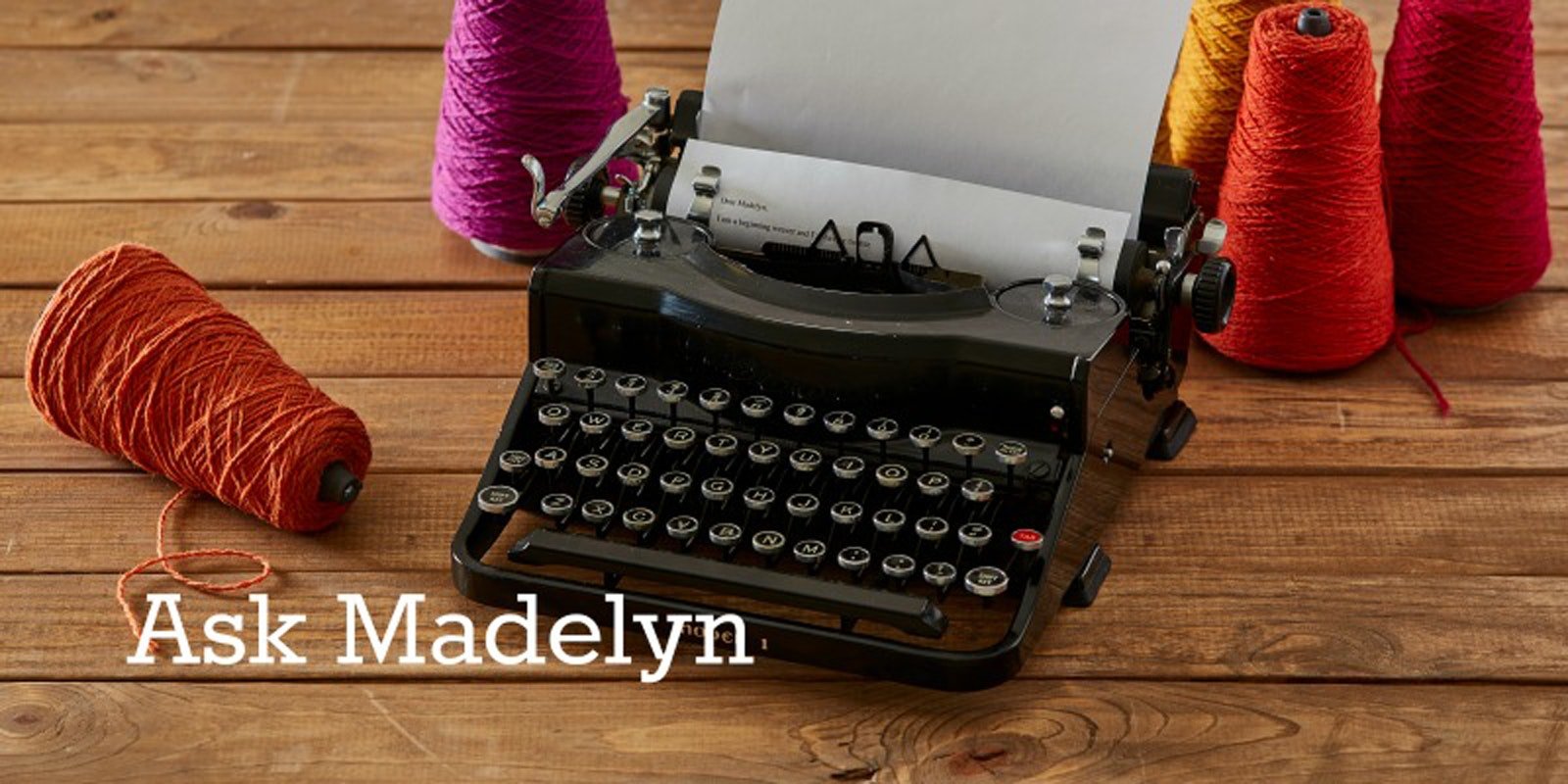I am wondering about how to avoid drawing in too much at the selvedges. When I try to allow enough weft in the shed, I seem to get loops at the edges. Any tips?
—Sandy
Hi Sandy!
Your question comes at a good time for me because I have been thinking a lot about this recently. The key issue is that enough weft slack must be allowed in the shed to accommodate the over-and-under path the weft takes after the threads relax. If you send the weft straight across at the fell, the weft will pull the warp threads together after you beat, drawing in the edges. If you allow too much weft slack, loops of weft may appear in the cloth and/or at the edges. Several different techniques can be used successfully, but there is only one way I've found that is easy to explain, easy to do, and really works.
Place the weft at an angle, with a smooth, firm turn at the edge, close the shed, and beat. If you beat on an open shed, you will pull the weft into a shallower angle as you beat and eliminate the intended weft slack. I used to say to use an angle of 30 degrees, but a student recently pointed out that my angle isn't that steep. She was right! It is more like 25 degrees. This discovery led me to outline a process to determine what angle works (the exact amount of weft slack will depend on the actual interlacement).
For weft threads that interlace less often than in a balanced plain weave, the weft angle will need to be less steep. Experiment, following the steps outlined here until you find the angle that works. Note that some yarns will not move through a closed shed; you'll have to keep the shed open, but guard to see that the weft is not pulled flat as you beat. For some weft-faced pieces (or very wide pieces), the space between the fell and the beater might not allow a sufficient angle. Other techniques (a series of waves or inverted "V's") must be used in these cases.
—Madelyn
Determining the right weft angle
For a balanced plain weave, start with a weft angle of about 25 degrees. Place the weft, close the shed (a) and bring the beater slowly to the fell (b) to check weft take-up and see that its turn around the selvedge is smooth (c).
a.
If the weft angle is too high (d), you'll see excess weft as you bring the beater to the fell (e) and loops may form at the selvedges.
If the weft angle is too low (f), the weft will draw the fabric in at the selvedge (g).
If you have a weaving question please email Madelyn! View related & recent "Ask Madelyn" posts!





